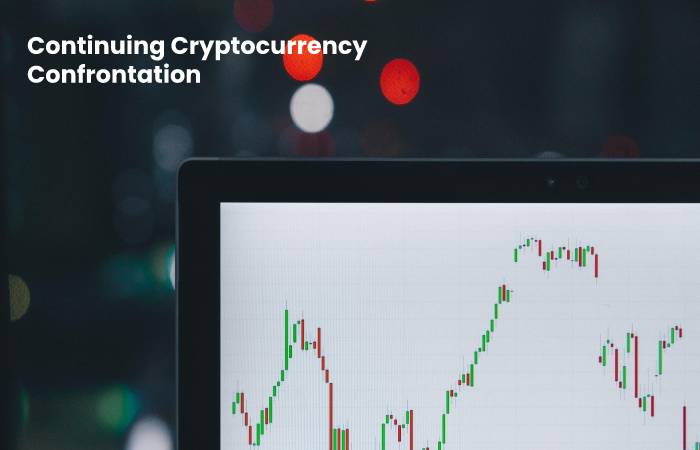Crypto Trends In The Investment Landscape
It seems that the hype around cryptocurrency is hard to tame. There are still investors who invest their money in cryptocurrency, driven by high hopes and dreams. However, the hysteria has gradually subsided, and the real value of cryptocurrency is beginning to show.
Large investment groups are increasingly considering replenishing their portfolios with cryptographic assets.
Let’s take a look at the statistics. According to the Fidelity study, about 50% of institutional investors recognize the high potential of digital assets and consider them very attractive. 22% of the 441 surveyed investment institutions are already in the market.
The days of passive investors turning in cash in exchange for a bunch of tokens have passed. Investors understand that it is much better to spend time and money to create real products with real value. Today, digital assets have become one of the best tech stocks to buy, according to experts.
If you’ve read the news in the last couple of months, you’ll notice several developments and events that will have a profound impact on cryptocurrency, at least from a couple of months to years. We will take a short look at these events.
Table of Contents
Trend #1: Purchasing Digital Assets Will Become Significantly Easier Due to Improvements in the Exchange Landscape
Coinbase today has more users than Charles Schwab. Not to mention the fact that every week several million new accounts were created on Binance.
It is a good sign for the cryptocurrency market in general. It also demonstrates how the infrastructure surrounding cryptocurrency has a long way to go before a mainstream can be implemented.
Holding an exchange provides a huge opportunity to make money. Given the challenges that our current transactions face, there are enormous opportunities for new companies to step in and meet this demand.
It is predicted that 2020 will be a year in which buying digital assets will be much more accessible than ever before. Thanks to the influx of both centralized and decentralized exchanges, the access of traditional high-tech companies, and additional services such as ETFs.
Centralized exchanges are quick and efficient, but they represent a huge security risk.
It is predicted that over the next 12 months, we will see a break-in on a significant exchange:
- Exchanges have been continuously hacking for years.
- Exchanges act as custodians of large amounts of money, which makes them a target. It attracts sophisticated attackers.
- Most exchanges are “centralized,” which means they are naturally sensitive.
- If we continue to see fast growth, exchanges will face more significant pressure to become more scalable for fear of losing market share due to competition. It may result in some exchanges using shortcuts to identify vulnerabilities.
If you keep the coins on the stock exchange, your risk is reduced. Hardware wallets such as Trezor or Ledger provide a massive increase in security.
In response to the risks inherent in centralized exchanges, we see the emergence of many decentralized exchanges. Currently, they are not very efficient and user-friendly, but the situation is beginning to change.
With the introduction of new technologies such as atomic swaps, what will the decentralized exchange market (DEX) look like? Atomic swaps can theoretically achieve everything that DEX is capable of.
Decentralized exchanges are not ready for mass implementation, which makes it profitable in the short/mid-term to store exchange-tokens (BNB, KCS, etc.). However, in the long run, centralized “native” stock exchange tokens are associated with high risk.
The exchange landscape will change drastically in the next couple of years, and the future is unknown. Will decentralized exchange protocols see mass implementation? Will the new investor market be won by the new “full-service” exchange platforms? Or will centralized exchanges such as Binance develop and protect their market share?
Exchanges will turn into huge profits, and those who win space in 2020 will be rewarded beautifully. If there are too many unknowns to make any kind of predictions with any confidence, invest in a few key players and keep the investments small to minimize the risk.
Trend #2. Crypto Will Boom
Not that we are bullheads, but the new Chinese approach to blockchain technology and even Bitcoin will eventually increase the cryptographic market somehow. We don’t know if the prices of Bitcoin and other altcoins will be at least equal. However, we are sure there will be more people who will use cryptocurrency.
After all, China is one of the largest economies in the world and is undisputed in terms of population. And to hear from President Xi Jinping speak much about the blockchain will undoubtedly encourage the Chinese people to discover more about cryptocurrency.
Many experts have also claimed that Bitcoin has bombed out this year and that the crypto-winter is over. Of course, Bitcoin and many astronomical algorithms are currently working sluggishly, but many are not worried about it.
On top of that, we have also seen Bakkt get approval from the New York Financial Services Department (NYDFS) for its Bitcoin future and storage services for institutional clients.
Trend #3. Privacy Will Be Key
The world looked at Hong Kong because of months of protests, which become so massive that U.S. President Donald Trump was even forced to comment on these events.
Besides the loss of life, destruction, and countless schools and businesses that have been affected by the protests, we witnessed several changes that had taken place in Hong Kong. One of them is their reluctance to use the Octopus card, which was usually used for transfers and other electronic payments.
Those who expressed dislike of this payment method feared that their identities would be revealed as well as their activities. For those who actively participated in the protests, their need for confidentiality cannot be overstated.
Fortunately, cryptocurrency allows them to make private transactions. The business has begun to accept Bitcoin, Ethereum, and Litecoin, which became more in demand.
The same can happen in other countries as more and more citizens begin to voice their grievances against their government. Privacy-based altcoins such as Monero and Zcash may be useful for this.
Trend #4. The Development of National Cryptocurrency
80% of countries are concerned about the prevalence of uncontrolled financial assets. Some would say that they should legally define their status and criminalize any use. China has already done this by banning any domestic crypto conversions.
As mentioned above, bank transfers are considerably inferior to crypto conversions. For this reason, any person who is aware of the benefits of digital money will respond to this ban by requiring the government to introduce a legal alternative.
One cannot say that the whole world will switch to blockchain currencies in an instant. However, 2020 could be the starting point for developing national cryptocurrencies.
Perhaps now, their value and names will coincide completely with real money. However, blockchain will take the world away from payment cards, and even more so from cash.
China changed its position towards the blockchain in 2019. Beijing seeks to be a leading player in the distributed grand register revolution. Not surprisingly, Chinese officials recently mentioned that they are working on the digital yuan.
This has made China the first major economy to acknowledge its desire to issue its digital currency openly. So far, little is known about this digital yuan, except that it will borrow some of the properties from existing cryptocurrencies.
The situation is unusual because it can change the balance of economic power and reduce the dollar’s status as the world’s backup currency. China is the first country to talk about a crypto-version of its national currency.
However, it is almost certain that other countries will follow. And while digital cryptocurrencies of central banks remain mostly conceptual at this stage, we will see significant changes in 2021 and beyond.
Developed countries realize cryptocurrency is our future. That’s why politicians have begun to support it.
Many countries are all are working or have already introduced regulations that favor digital banking. We can expect other regulators to do the same in the coming year. Here is a list of some of the countries:
- Switzerland – mainly the Zug region
- Germany – banks will be able to deal with cryptocurrency
- Ukraine – positive tax laws
- France – cryptocurrency companies can register their activities
- Some states in the United States – Wyoming
- Japan
- Korea

Trend #5. Increased cryptocurrency institutional interest
Businesses are becoming more and more interested in cryptocurrency. Until now, companies have not been able to work with cryptocurrency because this niche has not yet been ultimately settled. We are still waiting for the approval of Bitcoin, a regulated stock exchange in the USA, as the SEC is always postponing its final decision.
However, institutional investors already have access to other cryptocurrency derivatives, such as Bitcoin futures.
It’s only a matter of time before we see the regulated US Ethereum futures market – it may be approved sooner than we think. It is still too early to assess the full scale of impact that crypto investments can have on investors.
However, we can say that by the number of trading volumes of Bakkt futures reaching higher levels almost every week, it is worth observing signs of significant growth in 2020, as there is a high potential of a breakthrough.
Facebook has entered the cryptocurrency scene with a massive announcement in 2019. Mark Zuckerberg promises that their stable cryptocurrency, Libra, is the best way to cash out non-bank people.
If Facebook delivers the Libra project according to their plans and launches its wallet – Calibra by June 2020, it will be huge news.
So, the future of this is not so certain, as Libra has faced regulatory resistance. Governments want to make sure that the encryption of private Facebook will not jeopardize the monetary policy of the national economy.
Trend #6. Crypto Derivatives
The introduction of a passive crypto income in the form of betting and other crypto-derivatives is becoming a reality. Last year we saw that the market for crypto derivatives had grown considerably in size and availability.
We see more and more significant business players offering automated betting – the biggest exchanges such a Coinbase, Binance, and recently Kraken, which is the last one to enter the staking-as-a-service scene.
Development in this area will make the market more competitive in 2020, as we can be sure that more exchanges and companies connected with cryptocurrency will take their niche.
Trend #7. Continuing Cryptocurrency Confrontation
Many have learned about the blockchain through the cryptocurrency correspondents, as it is the basis for them. As mentioned above, banks are trying to step back from using cryptocurrency because of exchange rate instability.
At the same time, governments are getting closer to creating national cryptocurrencies. However, the market situation raises an entirely different question: What will happen to the two thousand cryptocurrencies that currently exist?
Experts say that significant changes should not be expected. What does it mean?
- At the top of the rating, there will be the same projects “fighting” for first place among themselves.
- Bitcoin will be stable, staying on top.
- Speculation will continue to increase activity on the stock exchanges.
Blockchain will not appear in a new light in the cryptocurrency market. It is already fully revealed. The only thing you can expect is unique projects that can break through to the top.
Currently, the industry is divided into two main categories: Bitcoin and everything else. “Everything else” includes Web3 Innovation, Decentralized Finance (“Defi”), Decentralized Standalone Organizations, intelligent contract platforms, security markers, digital identity, data privacy, games, corporate block-network or distributed account book technology, and much more.

Trend #8. Money or not, software-powered collateral economies are here
Another trend we have seen this year is a broader migration from “cryptocurrency” in an ideological sense (e.g., money/payments and means of exchange) to digital assets for financial applications and economic utility. A form of economic service that has come to the stage this year is the notion of a software-based collateral economy.
Typically, people want to have assets with disinflationary supply curves because part of their promise is that they must keep their value.
Smart contracts allow you to program the characteristics of any asset, so it is not wrong to assume that it is only a matter of time before the traditional collateral assets are digitized and put into use on a blockchain system.
The advantage of digital collateral is that it can be liquid and cost-effective while serving its primary purpose (to pledge another asset).
If assets can be allocated to multiple objectives at the same time, with proper risk management, then we must see greater liquidity, lower borrowing costs, and more efficient allocation of capital so that the traditional world cannot compete with it.
To sum up: looking ahead at 2020
We see 2020 as one of the brightest years in the digital asset industry. The year 2020 is expected to be the year of accelerated ripening of this industry.
As more and more industry giants enter the market, cryptocurrency is becoming a new asset class. For some accredited investors who have crypto, exposure can bring them in line with their global financial plans.
However, for the average investor, it may make sense to sit on the sidelines if you are not going into it with the same mindset that you have when buying a lottery ticket.
The adoption of cryptocurrencies takes place in both emerging markets and among the average Joe, who has noticed that the power of cryptocurrency can bring energy to the people.
Perhaps, by the end of the decade, most technology startups will be somehow connected to the cryptocurrency or blockchain. Just as almost every technology company today is somehow connected to the Internet.
Governments and institutions may be skeptical about cryptocurrency, but in the end, they will also possibly migrate to digital space running on blockchains.
Digital assets have already become a force to be reckoned with, and it will be interesting to see future trends in the global economy and the impact of cryptocurrency on our lives in the coming years.

